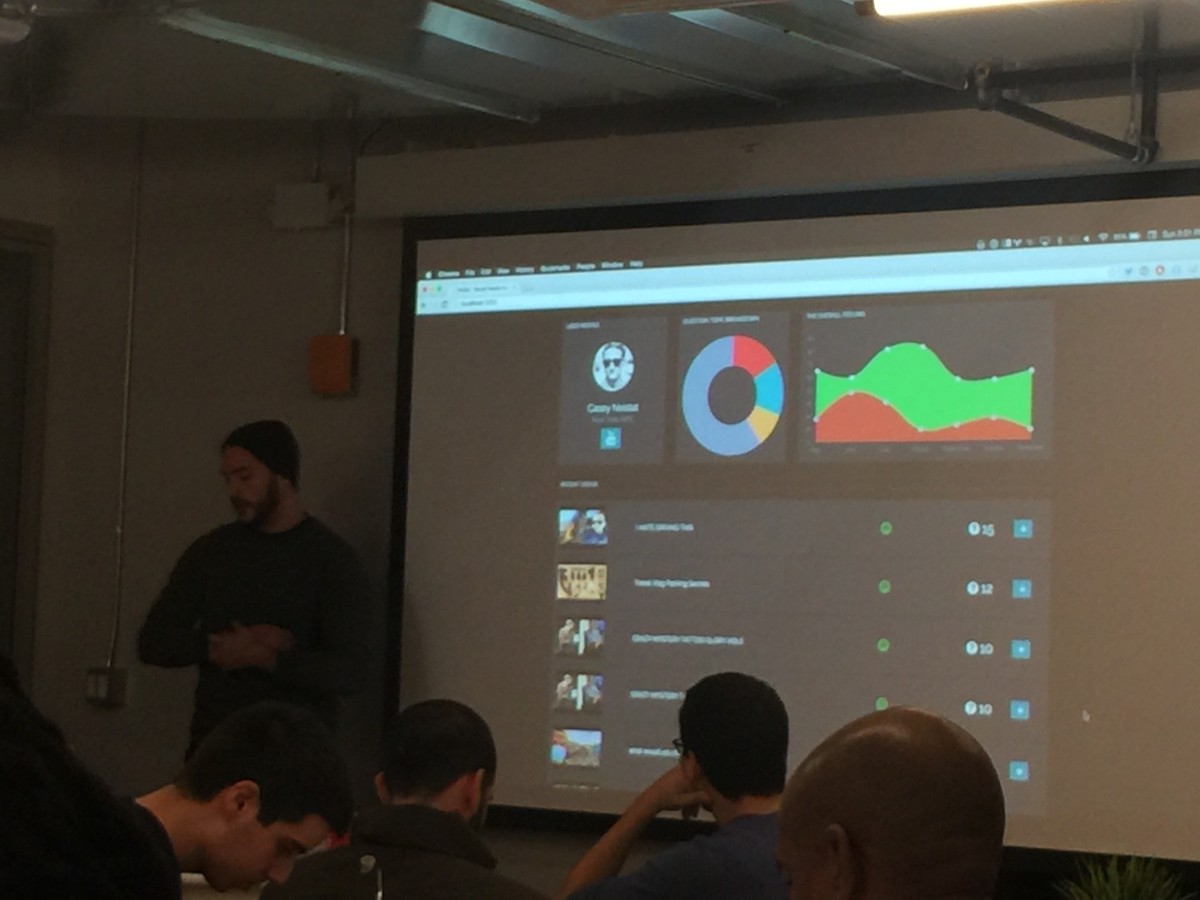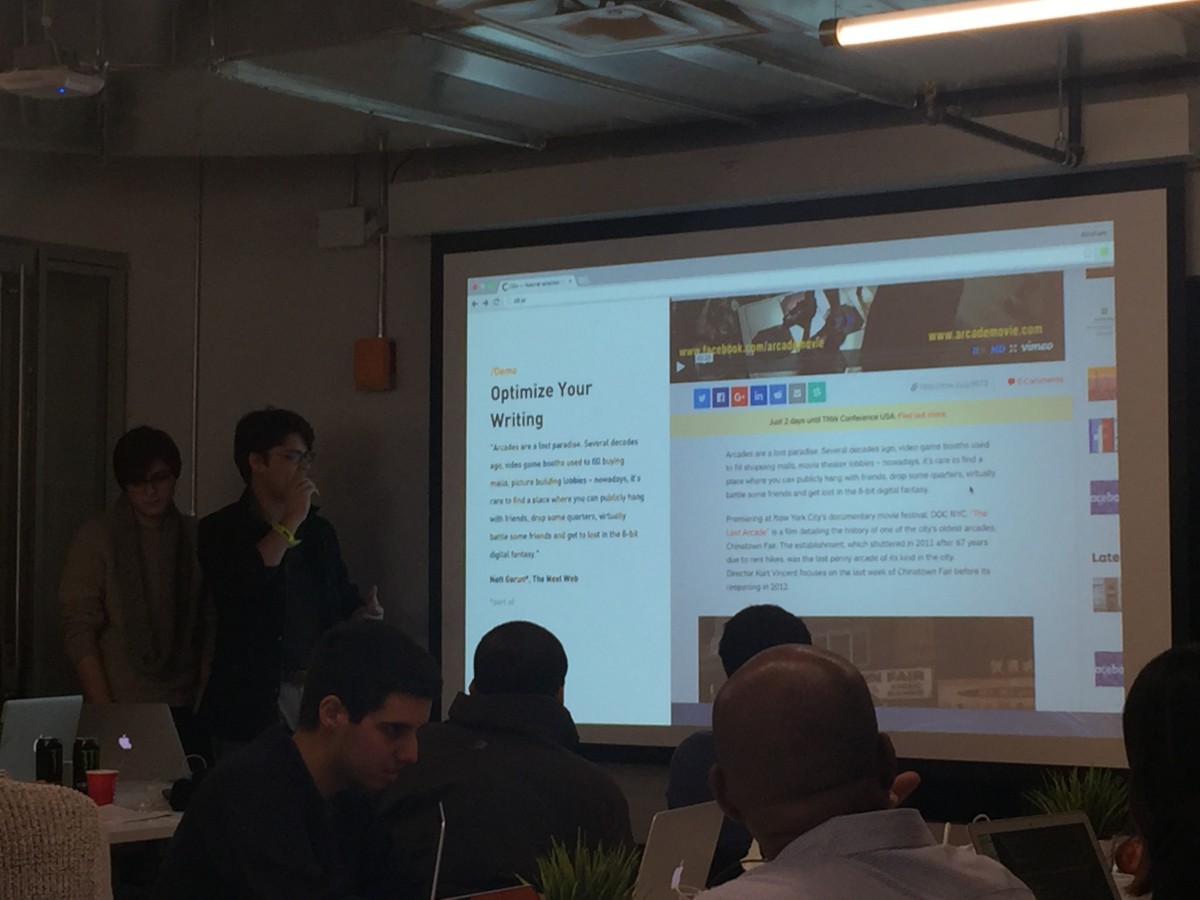
A weekend of busy hacking is over at AlleyNYC Chelsea in New York City, as the TNW USA Hack Battle comes to a close.
The teams have just presented the fruits of their labor and here’s my pick of my favorite four projects. Big thanks to our partners for the event: IBM Watson, Deezer, Todoist, The Things Network, Pebble and Verisign.
As these are hacked-together projects, they’re not live for public consumption but hopefully the developers will turn them into fully-working products in due course.
Treeder

Treeder is a clever tool that turns written articles into audio soundbites. It uses IBM Watson’s concept insights to analyze an article and identify the most salient points. These are then transformed into short audio clips using text-to-speech software.
Audio clips extracted form articles can be synced to Todoist, for when you’re involved with a specific research project.
FAQist

This neat project analyzes the comments on the social media profiles of high-profile people to find out what questions people are asking so that FAQs can be compiled.
It uses Watson to understand what a social media audience is interested in and also tracks the sentiment of the audience over time. The team demoed the app using data from YouTube star Casey Neistat’s social profiles.
Cilio

This interesting project is described as ‘natural selection for your copy.’ It uses Watson to analyze text, identifying key phrases and suggesting word choices to improve meaning.
The app then creates multiple variants of the article to identify which version performs the best. Provided it works as described and gets results, this is something I’d love to try on The Next Web. Maybe AI can be a better editor than a human?
Ultima

Ultima is like Siri for emergency response situations. This ambitious app detects emergencies nearby using social media data and alerts the user. It gives important information in real-time (for example during a fire it would give the current temperature) and contacts family members to check they’re safe.
An augmented reality mode gives emergency exit routes so that if visibility is low (for example during a fire) the user can find their way out.
The app logs data and actions taken by the user to a list in Todoist and a Blockchain ledger so that insurance companies can see what was done and when. There were maybe a few too many ideas thrown into this project, but the concept of a virtual assistant for emergencies is compelling.
Get the TNW newsletter
Get the most important tech news in your inbox each week.




